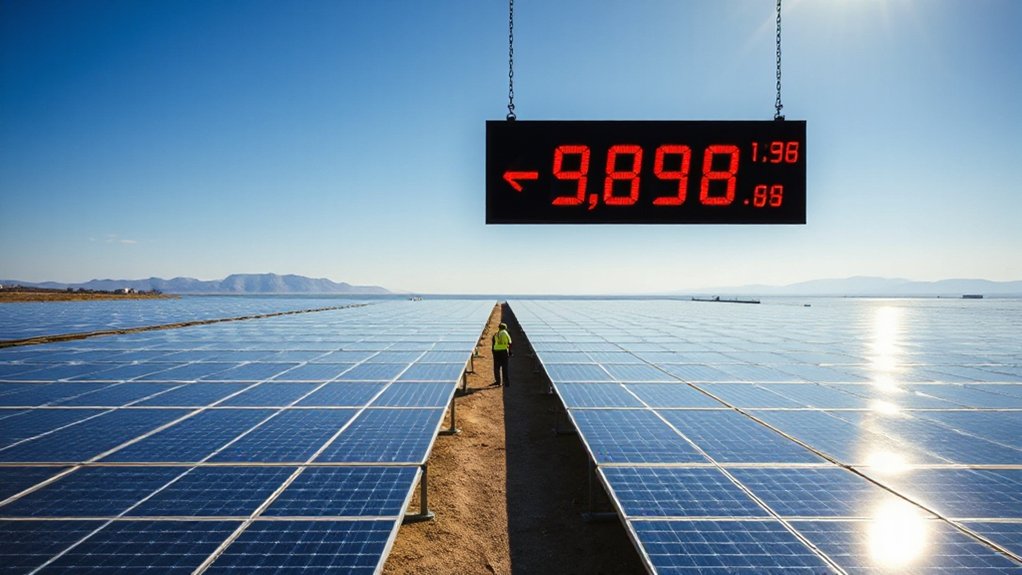Carbon credit prices are all over the map right now. Voluntary markets see prices around $4.80 per ton, while EU regulatory markets command a whopping $76. California splits the difference at $42. The global market sits at $1.4 billion but could explode to $250 billion by 2050. Premium credits from nature restoration and carbon capture fetch higher prices than basic efficiency credits. The market’s complexity goes way deeper than these surface numbers suggest.

Just how much is a ton of carbon dioxide worth these days? Well, it’s complicated – and frankly, all over the map. Right now, you’re looking at about $4.80 per ton in the voluntary market, down 20% from last year. But here’s the kicker: the entire global carbon credit market is only worth $1.4 billion. That’s pocket change compared to where experts think it’s headed.
Carbon credit prices are all over the place, with voluntary markets at $4.80 per ton – a fraction of where this market’s headed.
The future looks wild, depending on who you ask. Some say the market could balloon to anywhere between $7 billion and $35 billion by 2030. Others are even more optimistic, projecting values up to $250 billion by 2050. Heck, some forecasts suggest we might hit the trillion-dollar mark. Not bad for trading invisible gas. Organizations are seeing a significant rise in offtake agreements compared to previous years.
Location matters – a lot. In the EU, carbon credits are trading around $76 per ton. Meanwhile, California’s playing it cooler at $42. The UK and Australia aren’t sitting this one out either; they’re cooking up their own carbon border tax plans. Even Chile and Taiwan are getting in on the action. With over 6,200 registered projects worldwide by the end of 2024, the market is becoming increasingly diverse.
These aren’t your grandmother’s carbon credits. There’s a whole menu to choose from: reduction credits, removal credits, and those fancy “avoided emissions” credits. Some carry more weight than others. Nature restoration and carbon-engineering credits? They’re the premium stuff, trading at higher prices than your basic energy efficiency credits. Leading companies like Occidental Petroleum are pioneering carbon capture and storage solutions.
The market’s getting pickier, too. Investors want quality now – none of that questionable offset business. They’re especially hot for removal credits, which could dominate the market by 2030. We’re talking about a potential $42 billion market just for engineered removal credits by 2050. Pretty soon, carbon credits might represent 1.5% of global corporate profits.
The whole thing’s getting a high-tech makeover, with blockchain and digital technologies jumping into the mix. It’s not just tree-huggers anymore – institutional investors are piling in, and the market’s growing up fast. Transparency’s improving, and prices are finally starting to make sense. Who knew saving the planet could be so profitable?









